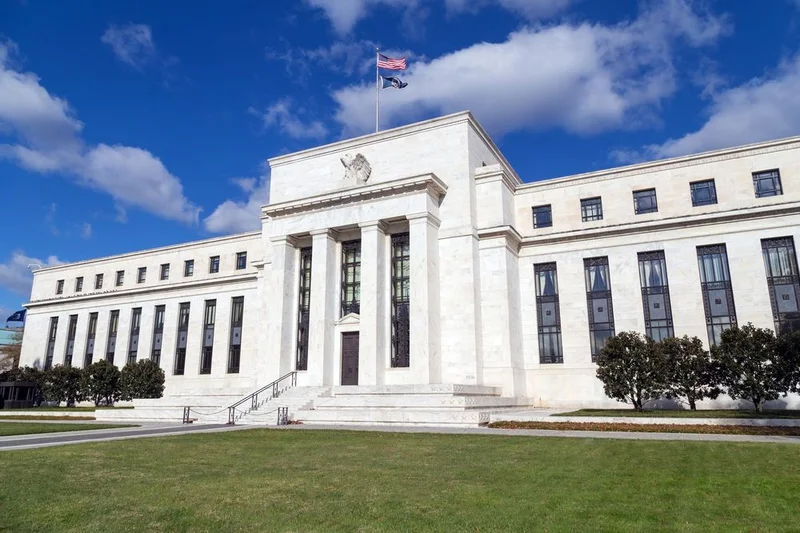The government shutdown, now grinding into its fourth week, is less a political event and more a predictable data point. For the 1.3 million U.S. military service members, the abstraction of Washington gridlock is about to become a concrete numerical reality: a zero in their bank accounts where a paycheck should be.
Treasury Secretary Scott Bessent has offered some assurance, stating there “should be enough” cash to cover the October 31st payroll. But his subsequent warning was devoid of any such ambiguity. The funds will not be there for the November 15th payday. This isn't a possibility; it's a forecast.
Imagine the quiet dread of a service member on the morning of November 15th, thumb hovering over their banking app, knowing the usual notification of a direct deposit won't appear. Just silence. The numbers on the screen will confirm what the news has been suggesting for weeks: the system responsible for paying them has failed. But another system, it turns out, has been preparing for this exact failure for years.
The Institutionalization of Crisis Mitigation
What was once an ad-hoc emergency response by financial institutions has now calcified into a formal, structured product line: the government shutdown assistance program. This is no longer about goodwill; it's about business continuity for a client base whose primary employer is proving chronically unreliable.
Look at the data from the institutions most deeply embedded with the military and federal workforce. Navy Federal Credit Union, which serves this exact demographic, has not only activated its "paycheck assistance program" but has also increased the maximum loan amount from $6,000 to $10,000. This isn't a trivial adjustment. An increase of that magnitude suggests their internal modeling anticipates a more severe or prolonged disruption than in previous events. The loan itself is a logistical marvel of risk mitigation (a zero-interest, zero-fee loan, which is essentially a free bridge loan) with eligibility tied directly to a pre-existing direct deposit relationship. No credit check required. The process is designed to be frictionless because the crisis is predictable.

Similarly, USAA is now allowing its members to apply for a second no-interest loan. The existence of a second-tranche option is a clear signal. It tells us the institution expects the shutdown to cross at least two pay periods. These aren't panicked reactions; they are pre-planned, tiered responses. This is the financial sector acting as a parallel treasury, creating a private safety net where the public one has frayed.
I've analyzed countless corporate risk disclosures, and what we're seeing here is the financial sector building an operational buffer against systemic political failure. It's both impressive and deeply unsettling. This is the free market’s version of a disaster recovery plan, but the disaster is our own governance. What happens when the private sector becomes so efficient at patching the holes in public administration that the incentive to fix the administration itself diminishes?
Pricing the Paralysis
If the actions of the banks provide a qualitative measure of concern, the betting markets offer a starkly quantitative one. Polymarket, a platform where users trade on the outcomes of real-world events, provides a clear forecast for the shutdown's duration. The market predicts a nearly 50% chance—to be more exact, 48%—that the shutdown continues on or after November 16th. This isn't punditry; it's a weighted average of expectations backed by capital. The market is pricing in a high probability of a missed November 15th payday.
This phenomenon has also gone mainstream. Government shutdown assistance has expanded for those worried about their next paycheck. Bank of America, Chase, PenFed, and even PayPal are all offering some form of assistance. PayPal’s offer of a $250 to $500 cash advance is particularly telling. It signifies that the financial disruption is so widespread that it has created a market opportunity for short-term, small-dollar credit typically associated with the gig economy, not salaried federal employees.
This entire ecosystem of loans, payment deferrals, and credit lines functions like a sophisticated shock absorber for a collapsing civic structure. It's a system designed to insulate individuals from the consequences of a failing government. It’s a necessary, even commendable, response. But it’s also an enabling one. It transforms an acute political crisis that demands resolution into a chronic condition that can be managed with financial products. The question we should be asking is not how these programs work, but what it means that they have to exist at all. At what point does this stop being a temporary backstop and start becoming a permanent, expected feature of American public finance?
A Privatized Public Trust
The data is unequivocal. The private financial sector has developed a robust, predictable, and scalable solution to legislative failure. These shutdown assistance programs are no longer a novelty; they are a mature financial product designed to service a recurring political event. On one hand, this is a testament to the market's ability to adapt and provide stability where there is none. On the other, it represents a dangerous normalization of dysfunction. We are now in a situation where the reliability of a service member's pay is underwritten not by the full faith and credit of the United States, but by the contingency plans of their credit union. This is the quiet privatization of the government's most basic responsibilities, and it’s a trend that shows no sign of reversing.
